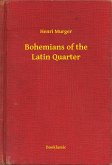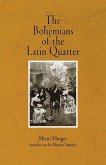Henri Murger's "Bohemians of the Latin Quarter" is a vivid portrayal of the lives of struggling artists and intellectuals in 19th-century Paris. Through a blend of narrative prose and lively anecdotes, Murger captures the essence of bohemian life, marked by ephemeral joys and profound suffering. The book is stylistically rich, employing an immersive realism that transcends mere documentation, inviting readers into the chiaroscuro world of artistic aspiration, camaraderie, and romance. Murger's keen observations of social dynamics and the vibrant, often harsh realities of life in the Latin Quarter render this work an essential text in the literary context of its time, foreshadowing the Impressionist movement and the emergence of modernist literary themes. Born in 1822, Henri Murger was deeply influenced by his own experiences in the Latin Quarter, where he lived amidst poverty while pursuing a career as a writer. His encounters with other aspiring artists and their fervent idealism cultivated a sense of nostalgia and a critical perspective on the artistic struggle. His lived experience imbued his narrative with authenticity, providing a window into a transformative cultural moment in Europe. "Bohemians of the Latin Quarter" is an indispensable read for those interested in the intersection of art, literature, and society. Its intimate portrayal of young creatives grappling with existential challenges resonates across generations, making it a timeless exploration of the human spirit in the face of adversity. I encourage readers to immerse themselves in this exquisite tapestry of life and art, as Murger's insights continue to inspire and provoke reflection.
Dieser Download kann aus rechtlichen Gründen nur mit Rechnungsadresse in A, B, BG, CY, CZ, D, DK, EW, E, FIN, F, GR, H, IRL, I, LT, L, LR, M, NL, PL, P, R, S, SLO, SK ausgeliefert werden.









